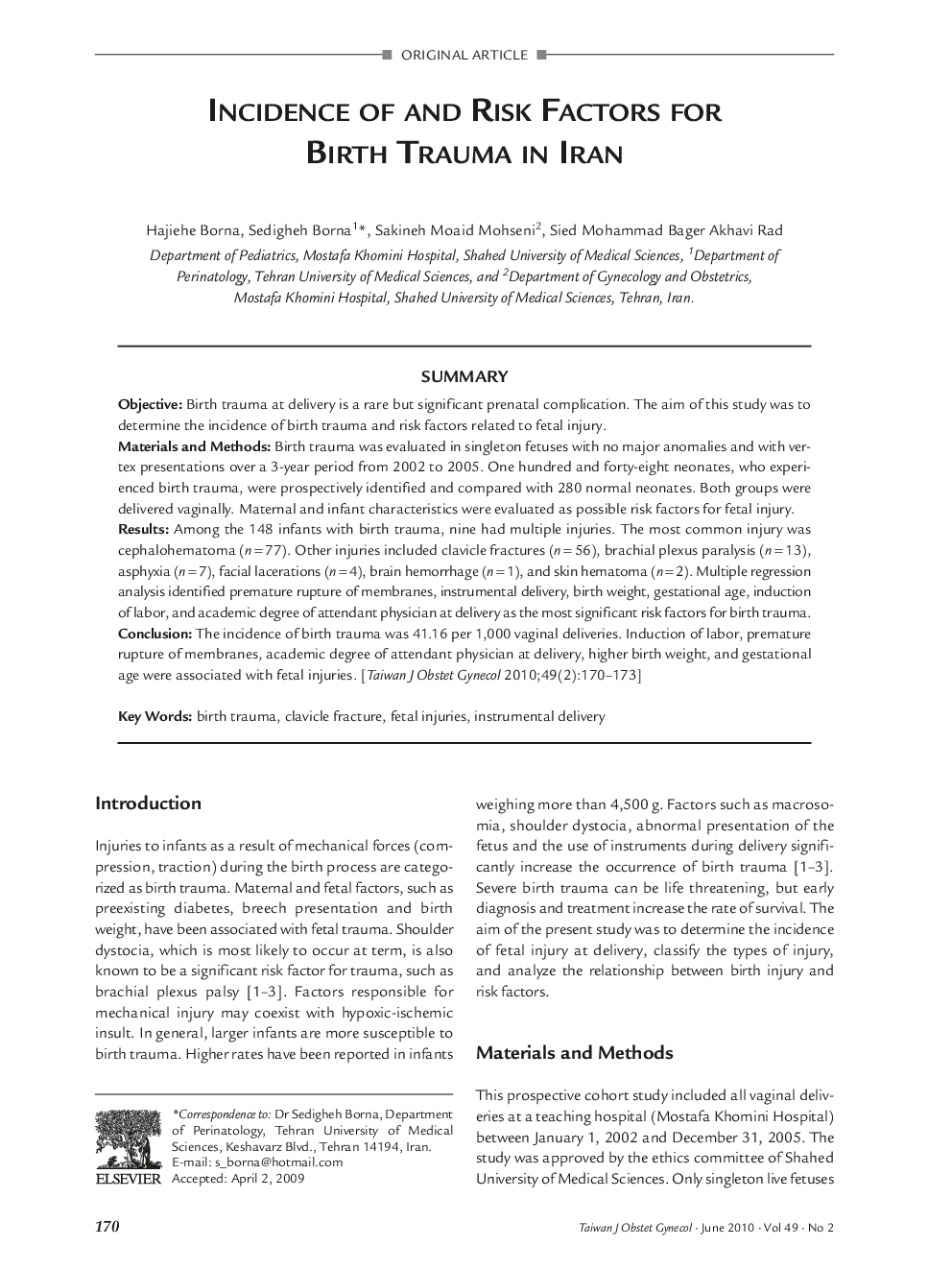| Article ID | Journal | Published Year | Pages | File Type |
|---|---|---|---|---|
| 3975845 | Taiwanese Journal of Obstetrics and Gynecology | 2010 | 4 Pages |
SummaryObjectiveBirth trauma at delivery is a rare but significant prenatal complication. The aim of this study was to determine the incidence of birth trauma and risk factors related to fetal injury.Materials and MethodsBirth trauma was evaluated in singleton fetuses with no major anomalies and with vertex presentations over a 3-year period from 2002 to 2005. One hundred and forty-eight neonates, who experienced birth trauma, were prospectively identified and compared with 280 normal neonates. Both groups were delivered vaginally. Maternal and infant characteristics were evaluated as possible risk factors for fetal injury.ResultsAmong the 148 infants with birth trauma, nine had multiple injuries. The most common injury was cephalohematoma (n = 77). Other injuries included clavicle fractures (n = 56), brachial plexus paralysis (n = 13), asphyxia (n = 7), facial lacerations (n = 4), brain hemorrhage (n = 1), and skin hematoma (n = 2). Multiple regression analysis identified premature rupture of membranes, instrumental delivery, birth weight, gestational age, induction of labor, and academic degree of attendant physician at delivery as the most significant risk factors for birth trauma.ConclusionThe incidence of birth trauma was 41.16 per 1,000 vaginal deliveries. Induction of labor, premature rupture of membranes, academic degree of attendant physician at delivery, higher birth weight, and gestational age were associated with fetal injuries.
